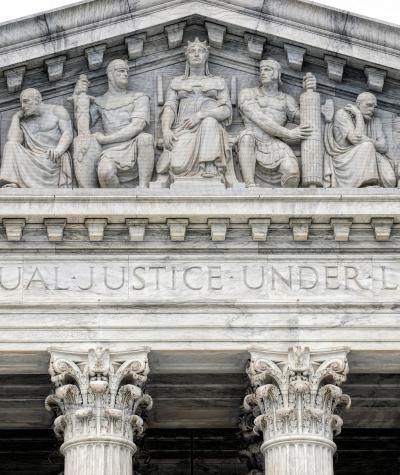This week, the U.S. Supreme Court issued its decision in Bethune-Hill v. Virginia State Board of Elections. The Supreme Court told the lower court to go back and take a second look at 11 state house districts to determine whether they constitute racial gerrymanders. But it is the reason why the Court required the do-over that’s so significant.
Bethune-Hill arrived at the Supreme Court after a three-judge federal district court held that the Virginia legislature’s plain use of racial quotas to unnecessarily pack black voters into state legislative districts did not violate the 14th Amendment’s ban on racial gerrymandering.
In drawing the districts, the Virginia Legislature required all 11 districts to meet a quota of at least 55 percent black voting-age population (BVAP). These sorts of targets tend to be used to pack minority voters into smaller numbers of districts, reducing the influence of the minority population statewide. According to the district court, this race-based intent did not matter, because the districts could, after the fact, be explained by other factors. But the three-judge court’s ruling was at odds with the Supreme Court’s 2015 decision in Alabama Legislative Black Caucus v Alabama, which held that a Legislature’s unsupported insistence on rigid and mechanical racial targets for state legislative districts provides strong evidence of an unconstitutional racial gerrymander.
Virginia had argued that voters must show an “actual conflict” between race and the more traditional criteria that states use for redistricting, like preserving municipal boundaries and keeping districts compact. As long as a state shows that it could have made the same districts without using race, a racial gerrymandering claim could not go forward. In other words, legislatures could act with a racially discriminatory intent as long as the districts were drawn neatly. Moreover, as the Supreme Court recognized, the traditional criteria relied upon are so malleable that this test would have insulated nearly every racial gerrymander so long as the legislature could invent an explanation for its district lines after the fact.
The Supreme Court rightly rejected this argument.
Instead, the court held that courts should take evidence like the 55 percent BVAP target into account when examining whether a legislature acted with a predominantly race-based purpose. The Court noted that the Equal Protection Clause is about the government’s intent, not about what a district’s lines look like. A legislature, therefore, cannot be excused for acting with a racially discriminatory purpose simply because it is able to cover its tracks. Courts must look at the reasons why states drew the districts, not at whether the state could have drawn the same districts without impermissible racial intent.
The Supreme Court’s decision, joined by six Justices, is a home run for voters. Virginia tried to make it harder for voters to bring racial gerrymandering claims, by allowing a state’s after-the-fact rationalizations to excuse blatant racial targeting. The Court refused to let that happen. It affirmed that states can create majority-minority districts in order to ensure meaningful minority representation, but reminded states that they cannot use districting as a means to sort voters by race to suit their political needs.
